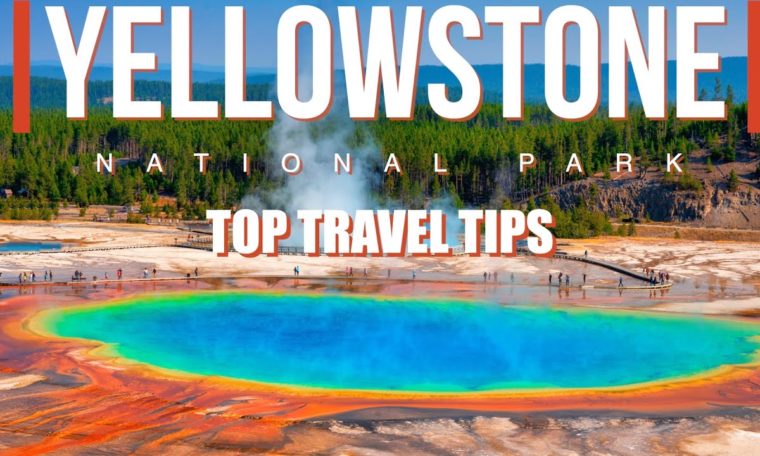
YELLOWSTONE NATIONAL PARK TRAVEL TIPS. Hello everyone and welcome to another JK’s Adventure. Hope you all are doing well. Kim and I spent a magnificent, magical week exploring Yellowstone National Park. If you have plans to visit soon then this is the video for you. You show you all the can’t miss stops and provide you some advice on things we wished we knew prior to traveling to Yellowstone National Park. Come along and if you have any questions whatsoever please leave them in the comments and we would be happy to answer them for you. During our stay we lodged at the Old Faithful Snow Lodge, Canyon Lodge & Cabins, and Mammoth Hot Springs Hotel. All were fantastic and although expensive were well worth it to be close to all the attractions of the National Park.
If you would like to support our channel please consider becoming a Patreon member. We would be forever grateful to have your support so we can keep bringing you new content.
Music from Soundstripe. If you use our code we get $15 off our monthly membership.
Items we mentioned in video:
America the Beautiful Pass
Bear Spray Maximum Strength & Larger Protective Barrier!
Peak Design Capture Camera Clip V3
Bushnell Binocular Bundle: Trophy XLT 10×42 Binoculars
By using Amazon links we get a very small commision from Amazon. Doesn’t cost you the viewer a thing. Just takes some of Amazon’s profits and gives it us. Even if you don’t order an item but order other items it helps. Thank you for all your support.
The Restless Giant
On March 1, 1872, Yellowstone became the first national park for all to enjoy the unique hydrothermal and geologic wonders. All of the hydrothermal activity in the park is part of the Yellowstone Volcano, which is powered by an underlying hot spot.
Yellowstone National Park has rich human and ecological stories that continue to unfold. People have spent time in the Yellowstone region for more than 11,000 years. Many tribes and bands used the park as their home, hunting grounds, and transportation routes prior to and after European American arrival. Yellowstone was established as the world’s first national park in 1872.
Yellowstone National Park is as wondrous as it is complex. Established primarily to protect hydrothermal areas that contain about half the world’s active geysers, the park also forms the core of the Greater Yellowstone Ecosystem. At 28,000 square miles, it is one of the largest, nearly intact temperate-zone ecosystems on Earth. It preserves a great variety of terrestrial, aquatic, and microbial life.
Yellowstone’s abundant and diverse wildlife are as famous as its geysers. There are nearly 300 species of birds, 16 species of fish, five species of amphibians, six species of reptiles, and 67 species of mammals-including seven native ungulate species and two bear species.
Yellowstone is home to the largest concentration of mammals in the lower 48 states. In addition to having a diversity of small animals, Yellowstone is notable for its predator–prey complex of large mammals, including eight ungulate species (bighorn sheep, bison, elk, moose, mountain goats, mule deer, pronghorn, and white-tailed deer) and seven large predators (black bears, Canada lynx, coyotes, grizzly bears, mountain lions, wolverines, and wolves).
Where can I see wildlife?
Habitat preferences and seasonal cycles of movement determine, in a general sense, where a particular animal may be at a particular time. Early morning and evening hours are when animals tend to be feeding and are more easily seen. But remember that the numbers and variety of animals you see are largely a matter of luck and coincidence.
It helps to know the habits and migration patterns of the animals you want to see and the habitats in which they live. For example, bighorn sheep are adapted to live on steep terrain, so you might see them on cliffs in the Tower area. Osprey eat fish, so you would expect to see them along rivers. Bison graze on grasses and sedges, and mate in August, so you are likely to see them in big, noisy herds in the Hayden and Lamar valleys.
Hydrothermal basins provide important habitat for wildlife. For example, some bison live in the Old Faithful area year round. In the winter, they take advantage of the warm ground and thin snow cover. Both black and grizzly bears visit these areas during the spring when winter-killed animals are available. Rangers at the visitor centers can tell you where wildlife have been seen recently.
Yellowstone was set aside as the world’s first national park because of its hydrothermal wonders. The park contains more than 10,000 thermal features, including the world’s greatest concentration of geysers as well as hot springs, mudpots, and steam vents. R
#yellowstonenationalpark #yellowstone #nationalparks..(read more)
CHECK OUT MORE: Travel Guides
EXPLORE MORE: Travel Tips



